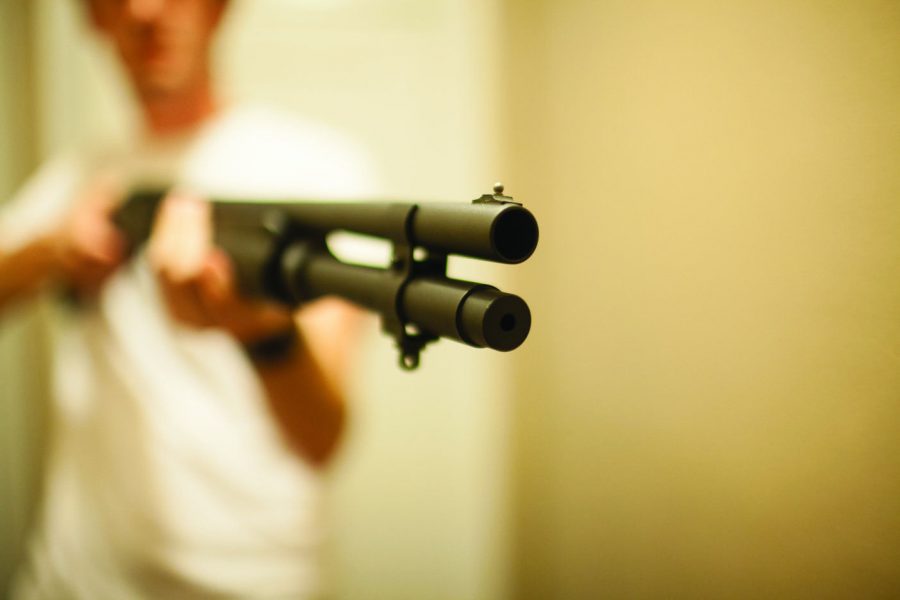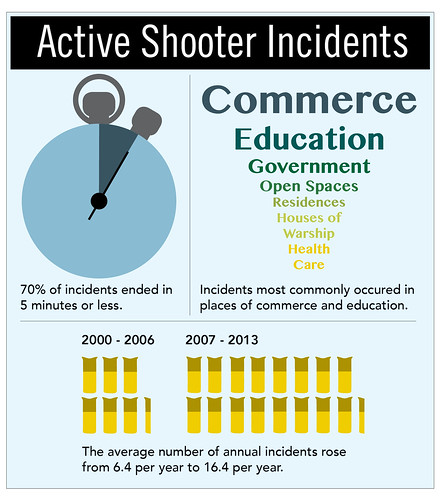Community questions preparedness in case of active shooter on campus
Tulane’s active shooter policy is unknown by some students, raising concern about the safety of students on campus. As of now, 20 colleges nationwide have had students die from gun violence in 2015.
After the Oct. 1 shooting at Umpqua Community College in Roseburg, Oregon, Tulane junior Jonathan Macht’s professor asked his class what they would do in the event of a shooting. The class was silent.
“He just went on to talk about this necessary protocol and then students started to cry and said this is such a sensitive issue, we can’t talk about this kind of thing right now,” Macht said. “My reaction to it was [that] it is a sensitive issue, but at the same time when are we going to have this conversation because I’d rather know what to do then to completely ignore it altogether.”
A study conducted by the FBI between 2000 and 2013 shows an increasing trend in the number of active shooter incidents nationally. So far in 2015, 20 college students nationwide have died from gun violence on campuses according to data provided by Tulane Director of Emergency Preparedness and Response Norris Yarbrough. Despite this national phenomenon, many students reported being unaware of Tulane’s active shooter policy and not receiving a text message during a test of Tulane’s emergency alert system Friday.
“The fact that I’m a sophomore and wouldn’t know what building to go to, what to do or how to respond if an active shooter came onto campus is a huge problem,” sophomore Lindy Disman said.
According to the federal Emergency Management Institute, an active shooter is an individual who partakes in the killing of or the pursuit of killing people in a populated area. The agency reports that 66.9 percent of active shooter situations end before the police arrive on the scene. It emphasizes the important roles student decision, awareness and preparedness play on the outcome of an active shooter situation.
The Office of Emergency Preparedness and Response presents Tulane’s active shooter protocol at new student orientation and posts the information online.
In part due to his dissatisfaction with many students’ lack of awareness, Macht started an online petition for the improved education of university procedures and drills surrounding active shooter procedures in addition to broader state legislative measures.
“I, myself, did not know we had one until I Googled it and it was on the school’s website,” Macht said. “The fact that that has to be done, I think is just ridiculous. More than anything the petition is to raise awareness on the issue of campus shootings.”
Macht is not the only student concerned about Tulane’s preparedness in the event of an active shooter. Students brought up their concerns with Tulane’s preparedness, particularly regarding the emergency alert system, at the recent safety town hall and presidential town hall with President Fitts.
Tulane sends out emergency alerts via a combination of emails, text messages, tweets @tulaneemergency, digital banners on teachers’ computers in classrooms and an audible alert through the blue light system, depending on the situation. While all other parts of the system appeared to work correctly, out of 19 students asked, only one responded saying they received the text message in the last full test of the emergency alert system.
“It’s all automatic, so if there’s something not clicking exactly right there and I’m missing groups of people, that’s why we do the test,” Yarbrough said. “That worries me.”
Infographic by Tasha Sirotak
Tulane takes a multi-pronged approach to prepare for an active shooter situation. This approach focuses on appropriate Tulane University Police Department training, faculty training, cooperation and close involvement with outside emergency services such as New Orleans Emergency Medical Services, New Orleans Police Department and the federal government. The final facet involves student preparedness and communication.
For community members, the plan emphasizes “run, hide, fight.” This protocol directs people to run to an area of greater safety, hide in an area outside of the shooter’s sight of view, and, in the last resort, fight against the shooter.
While he is satisfied with the training TUPD, faculty and other stakeholders in the case of an active shooter situation have received, Yarbrough acknowledges that other areas need improvement.
“No … I’m certainly not happy with the level of contact I’ve had with the students so far,” Yarbrough said. “It needs to be greater. And that’s on me, that’s my responsibility to find ways, which we’re doing, to spread that word, to spread that training.”
Yarbrough said he struggles to create student forums in which he can educate students on Tulane’s active shooter policy, believing the best training comes from face-to-face interaction, but he is trying to find ways to get this information out to the student body. By mid-December, students can expect to either see a flip-book or pocket guide that contains information on what to do in the event of an active shooter.
“There is a level of complacency that sets in on campus as opposed to a couple blocks off campus,” TUPD Superintendent Jon Barnwell said. “And I’m happy to say that means campus is safe … Sometimes we, as a whole, can be a victim of our own success when it comes to safety.”
The university is also aware of the issues with the emergency alert system’s text messaging and is working to solve it.
“The University IT team is working with Blackboard Connect, the vendor who provides our mass notification system, to diagnose and resolve the issue,” Yarbrough said. “At this point we feel we have an issue with ‘positive delivery of texts from the Blackboard Connect platform.’ It will be diagnosed and resolved as quickly as possible.”
Yarbrough said an upwards of 90 percent of faculty have received training in Tulane’s active shooter policy. According to Barnwell, TUPD meets or exceeds internationally recognized standards for response to active shooters.
“TUPD constantly trains in law enforcement best practices for active shooter response particularly in a university setting,” Barnwell said. “It’s not if it’s going to happen, it’s when it is going to happen. We need to be able to respond.”
Overall, Barnwell and Yarbrough agree that the threat of an active shooter on Tulane’s campus is low and have confidence that Tulane can keep its students safe in such a situation despite many students not knowing Tulane’s active shooter policy. Yarbrough estimates that there is a 0.2 percent chance of occurrence.
“We’re ready should the event arise,” Barnwell said.
Your donation will support the student journalists of Tulane University. Your contribution will allow us to purchase equipment and cover our annual website hosting costs.




